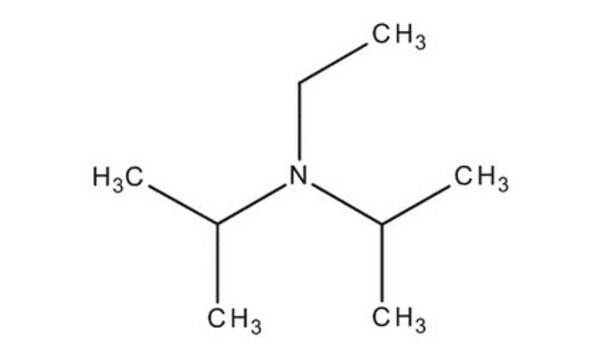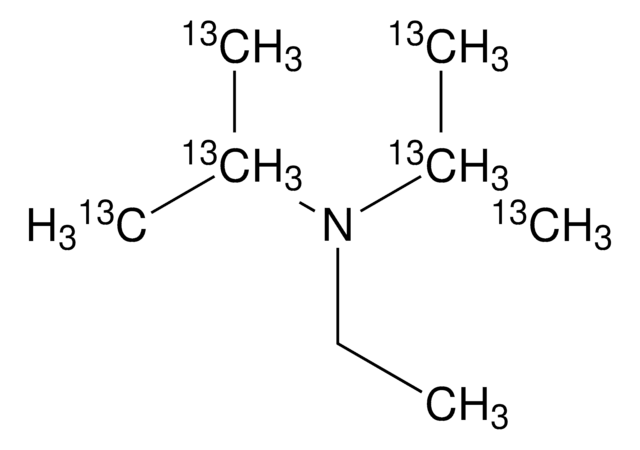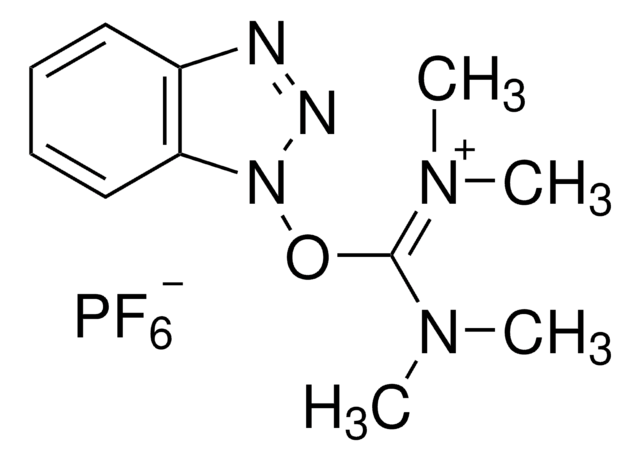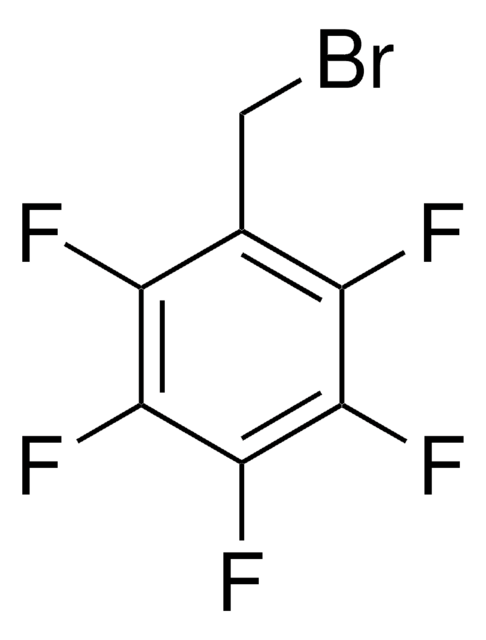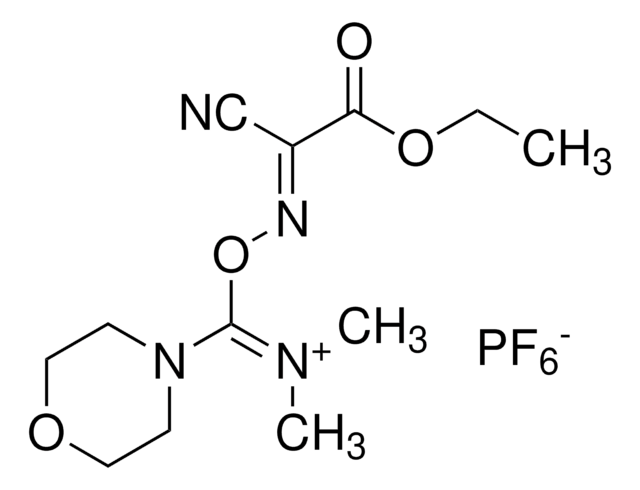496219
N,N-diisopropiletilammina
99.5%, biotech. grade
Sinonimo/i:
N-etildiisopropilammina, DIPEA, Etildiisopropilammina, ‘Base di Hünig’
About This Item
Prodotti consigliati
Grado
biotech. grade
Tensione di vapore
31 mmHg ( 37.7 °C)
Saggio
99.5%
Stato
liquid
Impurezze
<0.050% water
Colore
APHA: <20
Indice di rifrazione
n20/D 1.414 (lit.)
pH
12.3 (20 °C)
P. ebollizione
127 °C (lit.)
Punto di fusione
<−50 °C (lit.)
Solubilità
water: soluble 4.01 g/L at 20 °C
Densità
0.742 g/mL at 25 °C (lit.)
applicazioni
peptide synthesis
Stringa SMILE
CCN(C(C)C)C(C)C
InChI
1S/C8H19N/c1-6-9(7(2)3)8(4)5/h7-8H,6H2,1-5H3
JGFZNNIVVJXRND-UHFFFAOYSA-N
Cerchi prodotti simili? Visita Guida al confronto tra prodotti
Descrizione generale
Applicazioni
- In the palladium (0)-catalyzed alkoxy carbonylation of allyl phosphates and acetate.
- In the selective enolate formation along with boryl triflates.
- In the C–N coupling of aryl halides with nitroarenes in the presence of nickel catalyst.
Avvertenze
Danger
Indicazioni di pericolo
Consigli di prudenza
Classi di pericolo
Acute Tox. 3 Inhalation - Acute Tox. 4 Oral - Aquatic Chronic 2 - Eye Dam. 1 - Flam. Liq. 2 - STOT SE 3
Organi bersaglio
Respiratory system
Codice della classe di stoccaggio
3 - Flammable liquids
Classe di pericolosità dell'acqua (WGK)
WGK 2
Punto d’infiammabilità (°F)
49.1 °F
Punto d’infiammabilità (°C)
9.5 °C
Scegli una delle versioni più recenti:
Possiedi già questo prodotto?
I documenti relativi ai prodotti acquistati recentemente sono disponibili nell’Archivio dei documenti.
I clienti hanno visto anche
Il team dei nostri ricercatori vanta grande esperienza in tutte le aree della ricerca quali Life Science, scienza dei materiali, sintesi chimica, cromatografia, discipline analitiche, ecc..
Contatta l'Assistenza Tecnica.

